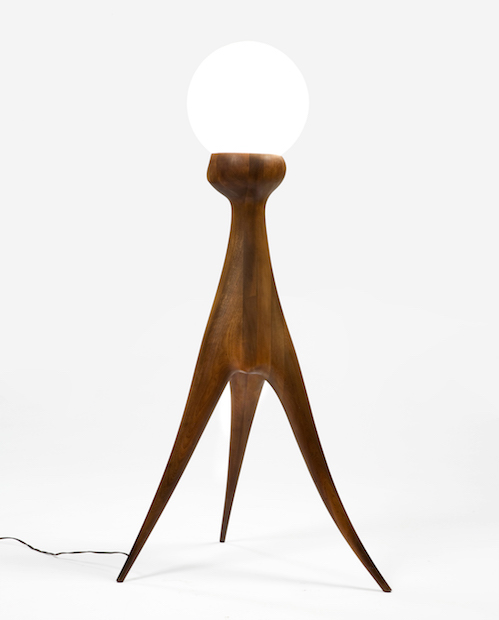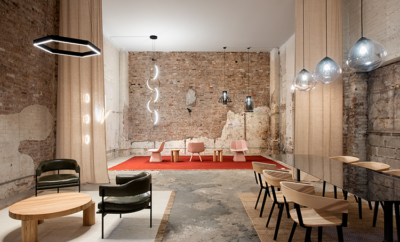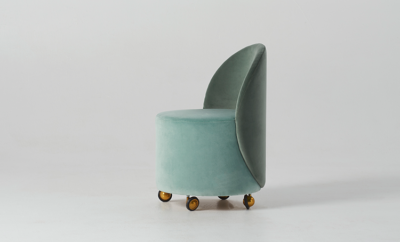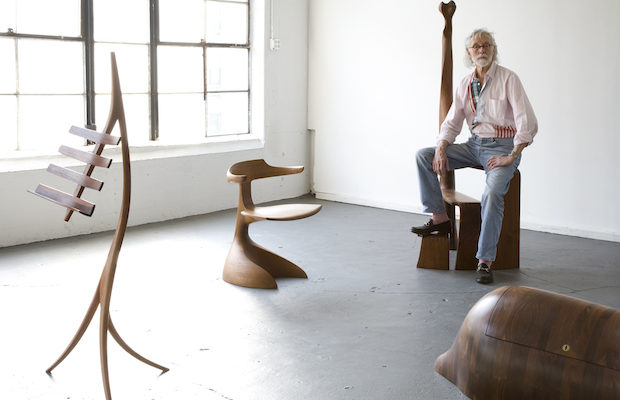 Photo Courtesy of Joe Kramm / R & Company.
Photo Courtesy of Joe Kramm / R & Company.
Design
A Tribute to Wendell Castle
On January 20, the design world lost one of the greatest living treasures of our time. From the small, yet burgeoning collectible design industry, it is safe to say that Wendell Castle has had one of the most significant and impactful influences on the furniture, craft, and design worlds than any other American maker. At first studying industrial design and later expanding to sculpture, Wendell found a unique way to bridge the gap between these two practices.
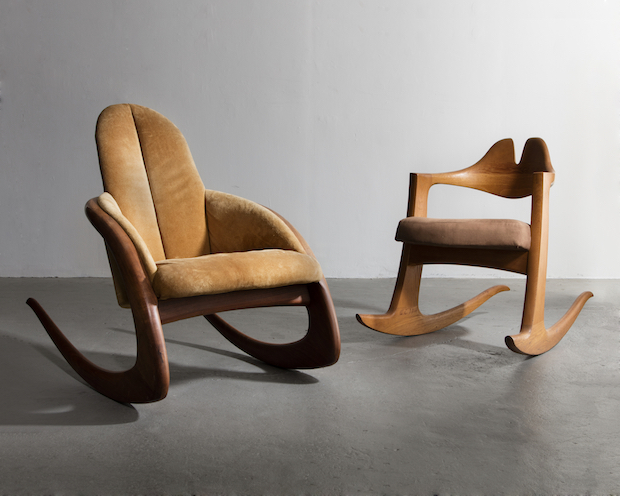
Crescent Rocker and Unique stack-laminated and carved oak Quinn Rocker with suede seat. Designed and made by Wendell Castle, Scottsville, New York, 1977. Photo Courtesy of Joe Kramm / R & Company.
In the late 1950s, Wendell was in a sculpture shop at the University of Kansas making a box to store his tools when a sculpture professor reprimanded him, stating that the sculpture studio was no place for one to make functional things. This comment gave the young Wendell Castle an idea. Why was a functional object somehow a lesser art form than sculpture? This question set Wendell on a path that he quickly realized was endlessly inspiring and could be the basis of his entire career. He figured that everyone he knew was making sculpture, and there were people making furniture, but no one was putting the two together. Wendell has always looked to challenge the rules, or at least make his own to follow. His work—from the earliest examples until the last pieces created at the end of 2017—was always purposefully done to break down the barriers set by the establishment.

Works by Wendell Castle. Photo Courtesy of Joe Kramm / R & Company.
The techniques Wendell perfected in the 1960s, such as bent lamination and stacked lamination, helped bring about a new movement in American furniture making. Through the development and repurposing of wood carving techniques taken from a Popular Mechanics magazine article on how to make a carved wooden duck decoy, Wendell single-handedly realized a new way to create volume and form. Within the first few years of his professional career, he had turned the furniture world on its head by creating massive wood sculptures that celebrated form before function. He could not bring himself to be satisfied with a top or a bottom to anything, so he created completely three-dimensional works that had no immediate orientation, or at least not at first glance.
Wendell produced evocative and graceful furniture that challenged preconceived notions of what furniture was supposed to be and how furniture was supposed to behave. For Wendell, it wasn’t about how the work functioned; it was about how it made you feel.

Unique “Serpent Table” in stack-laminated oak. Designed and made by Wendell Castle, Rochester, New York, 1967. Photo Courtesy of Joe Kramm / R & Company.
Wendell Castle will be missed, but he will never be forgotten. We now have only the celebrations of his brilliant career to look forward to. I thank Wendell Castle personally for inspiring me to better understand that furniture can exist as an equal form of expression to any other fine art practice. Having known Wendell for most of my life, I have been profoundly influenced by both his friendship and his work. I first met Wendell at about age 10, and later got to know him better while attending RIT, where he taught for more than four decades.
Wendell’s work can be found in the permanent collections of many American institutions, including The Metropolitan Museum of Art, The Museum of Modern Art, New York, the Museum of Fine Arts, Boston, The Museum of Fine Arts, Houston, the Smithsonian American Art Museum, The Philadelphia Museum of Fine Art, and The Art Institute of Chicago, to name only a few. His enormous contributions to the field of design will undoubtedly inspire generations long into the future.
Thank you, Wendell. May you rest in peace.


